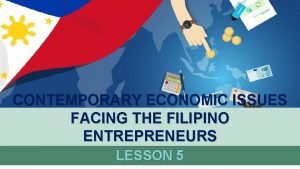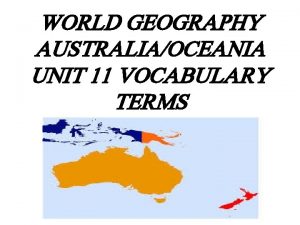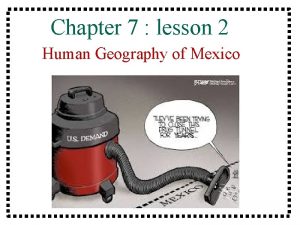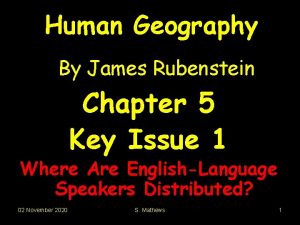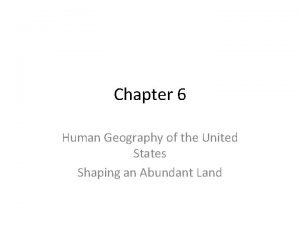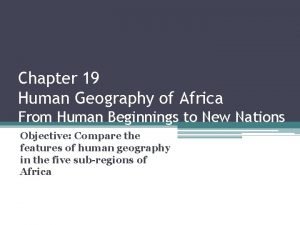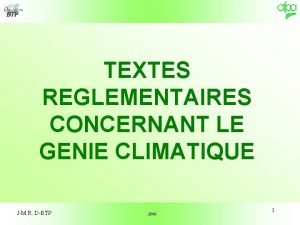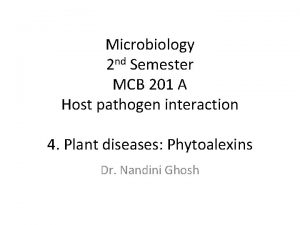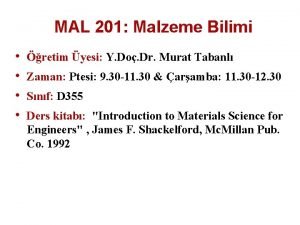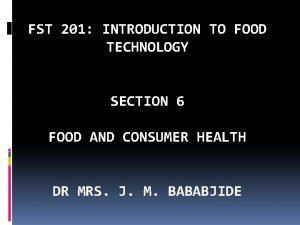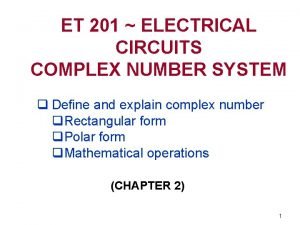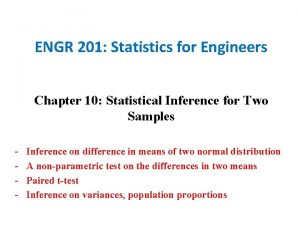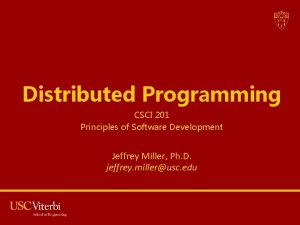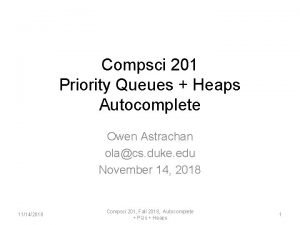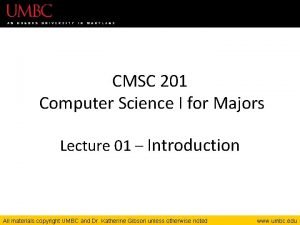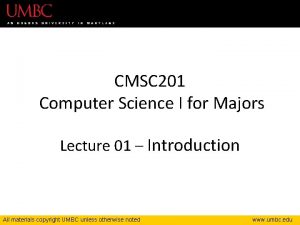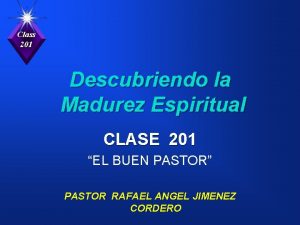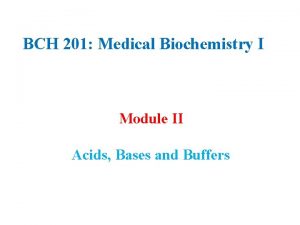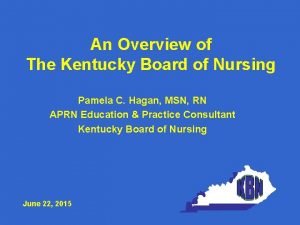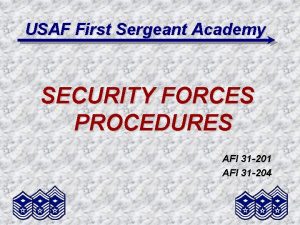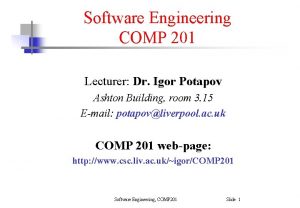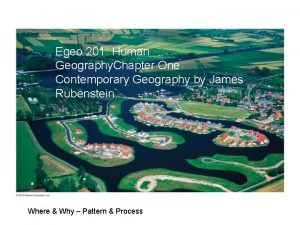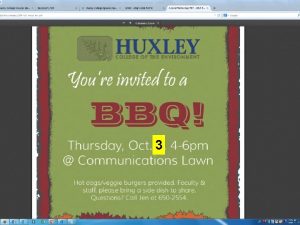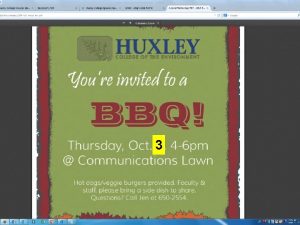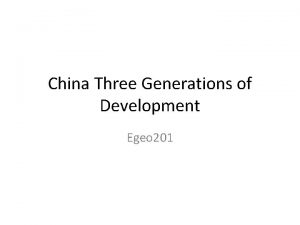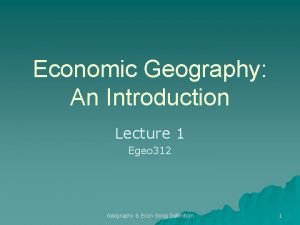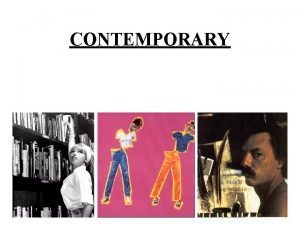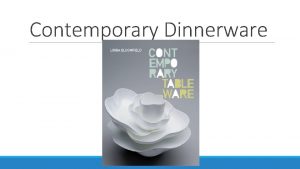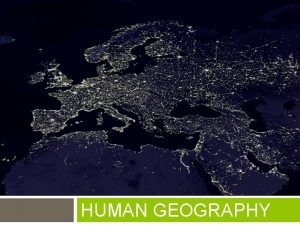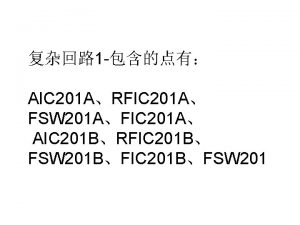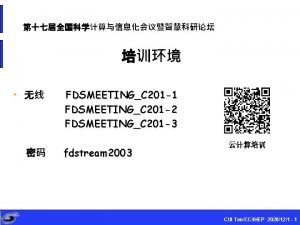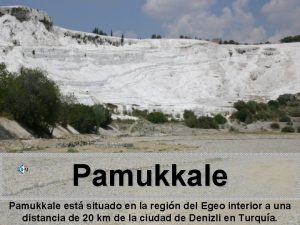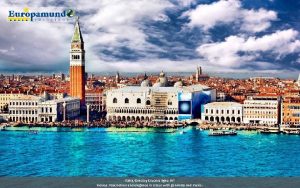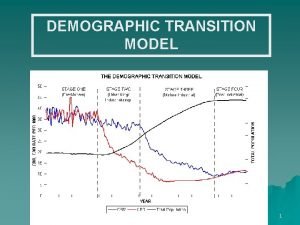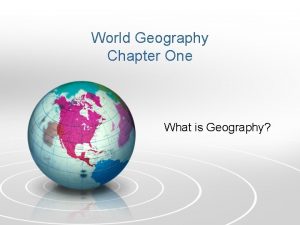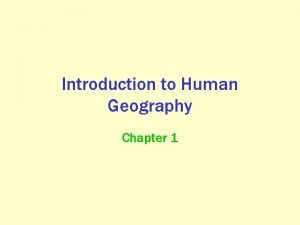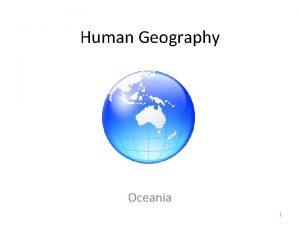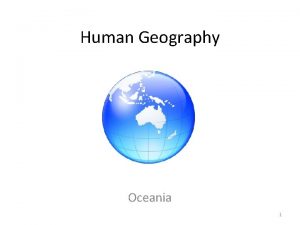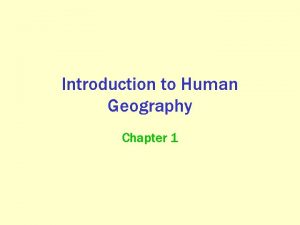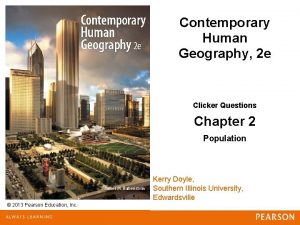Egeo 201 Human Geography Chapter One Contemporary Geography




















































- Slides: 52

Egeo 201: Human Geography. Chapter One Contemporary Geography by James Rubenstein Where & Why – Pattern & Process

Human Geography • Is a science that deals with three questions: Where are things – that is it looks at and for PATTERNS, second Why/How things exist at a specific location – that is it looks at and for PROCESSES that created the patterns, finally it considers why they are Significant – that is what are the IMPACTS of something at a given location. • Go to slides on definition building • An introduction to Human Geography http: //www. youtube. com/watch? v=1 Ce 4 P 05 Tr. NQ&feature=related What is Geography http: //www. youtube. com/watch? v=sv 2 p. LYTkw. G 4&feature=related

Some cool videos What is Geography – good music and nice pictures http: //www. youtube. com/watch? v=sv 2 p. LYTkw. G 4&feature=r elated An introduction to Human Geography – more academic http: //www. youtube. com/watch? v=1 Ce 4 P 05 Tr. NQ&feature= related Why should I care about Geography? -- fun https: //www. youtube. com/watch? v=Pl 8 OOIx. KYk 8 Whys Why study geography https: //www. youtube. com/watch? v=t_a 5 OLScri 0 – feel good, even Prince William studied Geography as well as Michael Jordan

Must see Video https: //www. youtube. com/watch? v=7_pw 8 duz. GUg


Pattern: Crop Circles • What are these strange patterns • By what process were they created – What does this tell us about society in the UK?

Process: Is there intelligent life here on earth? • Investigating Crop Circles – skip to minute 19 http: //www. youtube. com/watch? v=3 bq. Nv. M 7 op 64

Impact – Who Cares? http: //ww w. youtub e. com/wa tch? v=L 2 Zx. Vqd. ZIi w

Mapping – Providing Location Terms to know • Scale • Projection • Geographic Grid – lat. Long. , time zones • Remote sensing • GIS • GPS • Mash-ups

Outline of Additional Concepts • Where – Location • Absolute – Geocodes, coordinate systems, addresses, place names… • Relative – Example “turn where the cow is standing in the field” or Nebraska is next to Kansas or the Performing Arts center is across the street from the library • Why – Site & Situation

Where • Maps show us where things are

Why • Variety of tools available they include – Uniqueness of Location/Places – Uniqueness of Regions – Distribution of Features – Connections and Interactions between Places – Historical or Cultural effects

Uniqueness of Location/Places • Descriptive Characteristics – Site – Situation • Location Characteristics – Toponyms – Mathematical Location

Site • Internal descriptors at a place – Physical – includes climate, topography, quality of soil, existence of natural harbor… – Human Impacts – includes built environment, local cultural impacts, long-term changes due to human occupation

Steps in determining SITE characteristics • Establish clear boundaries around a geographic area or region (“circle the area”) – Political bounds – Natural bounds – Other – market area for a newspaper • Inside the bounded area evaluate characteristics that are available • Could be natural resources • Natural features – hills, rivers, caves… • Human developed features – roads, housing type, • Etc…

Site Examples Whatcom County (political bounds) • Recreational Opportunities: Ocean and Mountain venues • Rainy but Mild Climate • Region dissected by streams, rivers and wetlands • Mainly single family housing • Contains coal and forest resources

Situation External Relations – linkages between place being studied and it surroundings Think Network and links

Steps in determining SITUATION characteristics • Think of a network (like a spider web of activities) • Describe how the location you are focusing on relates to all other locations on the network

Steps in determining SITUATION characteristics 0. Think of a spider web 1. Change your entities/places (i. e. places) into points 2. Locate connections between the points (building your web or network) 3. For each point on this network describe how well it is interconnected, extremes are end-points (dead ends) or hubs (connections between numerous points)

Situation Examples • Access to Economic Inputs – e. g. connections to oil fields • Location on travel routes – airline hub and spoke system or interstates



Example Using Battle of Gettysburg Step Back first – Civil War Regions Pattern – Process Toponyms

Examples of Situation and Site Gettysburg movie part 1 Situation – “…all the roads converge here…what is the name of this town? ” General R. E. Lee Start around minute 11: 00 stop about 13: 00 http: //www. dailymotion. com/video/x 25 l 4 m_gettysburg-moviepart-1_events Site -- Colonel Buford – best d** ground I’ve seen all day – the Devil to pay… the high ground -- 16: 40 http: //www. dailymotion. com/video/x 267 h 7_gettysburg-part 2_people Charge down little round top … we’ll have the advantage of moving down the hill… -- 0: 07 http: //www. youtube. com/watch? v=w. YDh. Amjmx. Yk

Gettysburg – Site -local features – high ground

Gettysburg – Situation – center of a network of roads

Toponyms • Naming a place – helps recognizing WHERE • Rough rules Generally naming is based on the following historical progression 1. Natural features (note the remaining Salish names in our region, followed by names left by the Vancouver Expedition, for example Whatcom Creek and Bellingham Bay) 2. Settlements (the lack of large permanent Native American settlements, left this task to primarily European & American settlers) 3. Roads (In Bellingham primarily a late 19 th early 20 th century task -- note the prominence of State names and even a section of town where streets are named after the Great Lakes (where do you think these people or developers came from? )) 4. Parks, Schools, Public Facilities, . . . (primarily a 20 th century to recent task -- note the recent name change from Washington National Airport the Ronald Reagan Airport) 5. Anything that's left over or added (in Seattle we now have the "Gov. Rosaylene Bridge at Evergreen Point" rather than the original Evergreen Point Bridge or the Haggen Court at Carver Gym some day we might have '" your name here" Recycling Bin in the President Shepard Coffee Shop at the Viking Addition of the Western Student Union" )

How to Organize Space & Describe Space • Regions – relate more to process then pattern • Distribution – descriptors that help us understand patterns

Regions -- spatial organizing tool • Functional or Nodal – organized around a node of focal point – television station market (not satellite) • Formal or Uniform – everything inside shares common characteristic – country with citizens inside (ignore foreign residents) • Vernacular or Perceptual – exist in minds of people as cultural identity – “Midwest” in the US

Functional Region: Television Markets - organized around a node of focal point – broadcast signal (note the outlines of the states and counties are formal regions)

Formal Region from 2008 election County Level Retuns -- everything inside shares common characteristic

Formal Region from 2008 election State Level Retuns -everything inside shares common characteristic

Formal Region from 2008 election -- everything inside shares common characteristic -- note difference if controlled for by population -- Cartogram http: //www-personal. umich. edu/~mejn/election/2008/stateelecredblue 1024. png

Vernacular Region: “The South” -- exist in minds of people as cultural identity

Above is a map of the fan base for ML Baseball teams, what kind of regions are these? http: //www. nytimes. com/interactive/2014/04/24/upshot/facebook-baseball-map. html? _r=0

What kind of Regions?

Add the Vernacular South to the Formal Voting Pattern Region

Distribution - Density – count of objects in a given land area - Concentration – clustered versus dispersed - “Geometric” Pattern – geometric arrangement of objects across space – regular versus irregular or random pattern

Density: count of an object per measure of space Concentration: How clustered or spread/dispersed across the landscape Lower Density 24 homes Highly Dispersed Higher Density 32 homes Clustered -Concentrated

Another view of population density http: //www. businessinsider. com/22 -gorgeous-maps-that-define-the-united-states-of-america-2013 -7#heres-where-americans-live-5

1950 Concentrated 2009 Dispersed

Geomentric Pattern (2. 0) Pattern – geometric arrangement of objects across space – regular versus irregular or random pattern

Suburban Patterns Rectilinear Pattern Curvilinear Pattern Combination

Other Patterns Rectalinear Oval pattern “Crime Control Suburban • Note there is only one or two ways in our out

Distance Decay Concepts on Distance Space-Time Compresion

Hearth & Diffusion • Hearth – Where did something originate • Diffusion – How did it spread – Relocation Diffusion – result of people moving – Expansion Diffusion – spread of feature in additive process • Hierarchical – from more important to less • Contagious – widespread throughout • Stimulus – only idea or underlying principle spreads

Blue Jeans: Hearth & Diffusion Relocation – starts in San Fran. Moves with miners & others Expansion Three Types • Hierarchical – easier to find in urbanized areas • Contagious – people see what the like & buy • Stimulous – others copy idea – competing brands Levi Straus – not wearing blue jeans!!!

Levi Strauss and His Company by Susan Saperstein As historians, we like to correct others’ misconceptions of history. Here are some myths about Levi Strauss and his company: MYTHE • Levi Strauss invented jeans when peddling tent canvas material in gold camps. The miners asked for strong pants, and he made pants out of the canvas and used rivets on the pockets. • The company always made jeans. • The name denim comes from a town in France named Nimes. • These pants with the riveted pockets were always called jeans. TRUTH The actual history goes like this: • A tailor named Jacob Davis was the inventor of the pants later known as Levi’s or jeans. He approached Levi Strauss & Co. with his idea to secure a patent. It is likely that Davis thought that the company could give him the business network needed to market his idea. Ben Davis, his grandson, later founded the Ben Davis Manufacturing Company – still owned by the Davis family. • The company started out selling dry goods such as clothing, buttons, bedding, and other textiles to small stores in the West in the early 1850 s. The patent for the pants was not granted until 1873. http: //www. sfcityguides. org/public_guidelines. html? article=244&submitted=TRUE&srch_text=levi%20 straus&submitted 2=TRUE&topic=

Expansion –Contagious & Hierarchical Diffusion: Swine Flu 4/27/2009

Human-Environment Interaction The environment provides a base upon which humans interact • Possibilism – adjusting to the environment – Not environmental determinism Humans alter the landscape • Global climate change, leveling and filling

Maps: Look in Book • Projections • Scale • Mathematical Location –coordinate systems • Mashing • GIS

Other things • Dumb and Dumber Geography Lesson http: //www. youtube. com/watch? v=y. UNgdkqj. I 8 E&feature=related • What is Science? The Daily Show Definition. http: //www. cc. com/video-clips/x 1 h 7 ku/the-daily-show-with-jonstewart-weathering-fights---science--what-s-it-up-to-
 Ap human geography frq format
Ap human geography frq format 5 themes of geography ap human geography
5 themes of geography ap human geography Proruption ap human geography
Proruption ap human geography Gni definition ap human geography
Gni definition ap human geography One god one empire one emperor
One god one empire one emperor One one one little dog run
One one one little dog run One king one law one faith
One king one law one faith Byzantine definition
Byzantine definition One ford behaviors
One ford behaviors See one do one teach one
See one do one teach one One price policy
One price policy One face one voice one habit and two persons
One face one voice one habit and two persons Studiendekanat uni bonn
Studiendekanat uni bonn Asean tourism strategic plan
Asean tourism strategic plan Asean one vision one identity one community
Asean one vision one identity one community How does investment affect filipino entrepreneurs
How does investment affect filipino entrepreneurs Characteristics of contemporary dance
Characteristics of contemporary dance Ap human geography chapter 11 vocab
Ap human geography chapter 11 vocab Chapter 16 section 1 russia and the western republics
Chapter 16 section 1 russia and the western republics Chapter 22 human geography of southwest asia
Chapter 22 human geography of southwest asia Chapter 11 ap human geography
Chapter 11 ap human geography What influenced mexico’s political and social structures
What influenced mexico’s political and social structures Multilingual definition ap human geography
Multilingual definition ap human geography Chapter 13 human geography of europe
Chapter 13 human geography of europe Chapter 5 key issue 1 ap human geography
Chapter 5 key issue 1 ap human geography Chapter 6 human geography of the united states
Chapter 6 human geography of the united states Chapter 25 section 3 nepal and bhutan
Chapter 25 section 3 nepal and bhutan Chapter 19 human geography of africa
Chapter 19 human geography of africa Human needs and human development chapter 8
Human needs and human development chapter 8 Chapter 8 human needs and human development
Chapter 8 human needs and human development Nf p 40-201
Nf p 40-201 Mcb 201
Mcb 201 Math portfolio project
Math portfolio project Kafes parametresi nedir
Kafes parametresi nedir Cartoons
Cartoons Fst 201
Fst 201 Et 201
Et 201 Engr 201
Engr 201 201 principles of software development pdf
201 principles of software development pdf Duke cs 201
Duke cs 201 Cmsc 201 umbc
Cmsc 201 umbc Cmsc 201
Cmsc 201 Class 201
Class 201 Clase 201 descubriendo mi madurez espiritual pdf
Clase 201 descubriendo mi madurez espiritual pdf Fmvss 201
Fmvss 201 Bch 201
Bch 201 5 c.f.r. § 2640.201(a)
5 c.f.r. § 2640.201(a) 201 kar 20:057
201 kar 20:057 Alcoa pittsburgh address
Alcoa pittsburgh address English 201
English 201 Afi 31-204
Afi 31-204 What is software
What is software Se 201
Se 201















